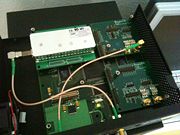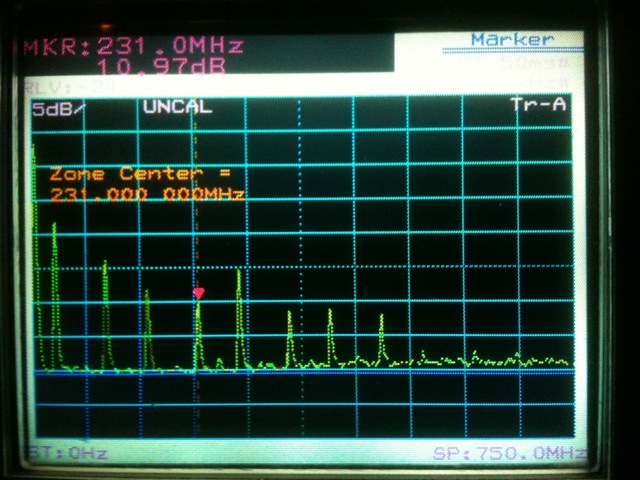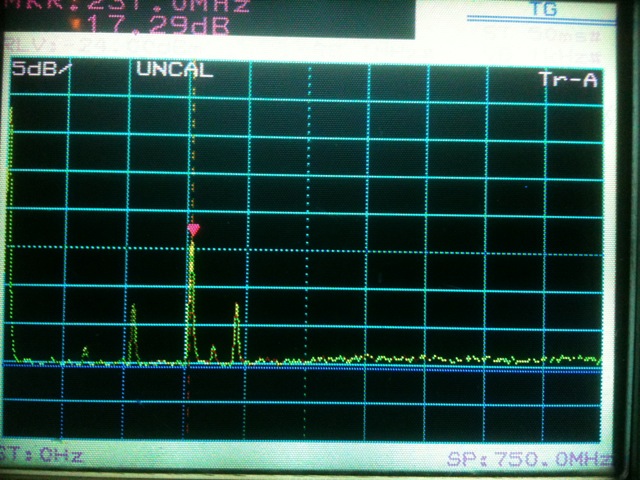Basic TX
(New page: USRP with BasicTX ==DAB tests with Basic TX== Test with the BasicTX: On the picture you see the board installed inside the USRP, TX A port (Upper right...) |
Revision as of 11:22, 5 February 2010
This board take the signal from the DA's and provide the output with SMA connectors via a transformer. The don't use any active components, you get after the transformer what you have directly from the D/A converter.
The D/A converter of the USRP is at 128MHz so it is possible to generate frequencies up to 64MHz. However because of the absence of filtering, there are harmonics centered around 128MHz and around 256MHz (and higher but components get much weaker). This is the reason why it is possible to generate signals in VHF bands.
For example to generate a signal at 225MHz, the baseband signal will be at 31 MHz and the harmonics at 128-31=97MHz; 128+31=159Mhz; 256-31=225MHz; 256+31=287MHz. Because we use a soustractive harmonic, the signal is mirrored so it is necessary to generate a mirrored baseband signal. This can be done by adding a "-" sign to the frequency in gnuradio.
DAB tests with Basic TX
Test with the BasicTX: On the picture you see the board installed inside the USRP, TX A port (Upper right)
When we generate a signal on this board we have measured a total power of 18 uW. (with 50 ohm load 0 dB of gain in the gnuradio module)
As we use one DA from the TX A port (USRP have two DA's with balanced output on each port) we get a real signal at the output, meaning that you get every harmonics and image frequency till they go in the noise floor (bandwidth of the onboard transformer used to unbalance and adapt the output inpedance)
This is typically how looks the output spectrum of the BasicTX.
Note the red marker showing the desired working frequency in the Band III (see Band 3 Channels) (exact value: 12C @227.360 Mhz during the measurement).
To filter the lower and stronger peaks will required more than 80 dB of attenuation and the same for the next upper peak ! The picture show the spectrum from 0 to 750 Mhz
So ! this will required further filtering before applying any pre amplifier stage...
The same now but with a first filtering trial... we still have to much unwanted carriers near the working band !!! TBC...


